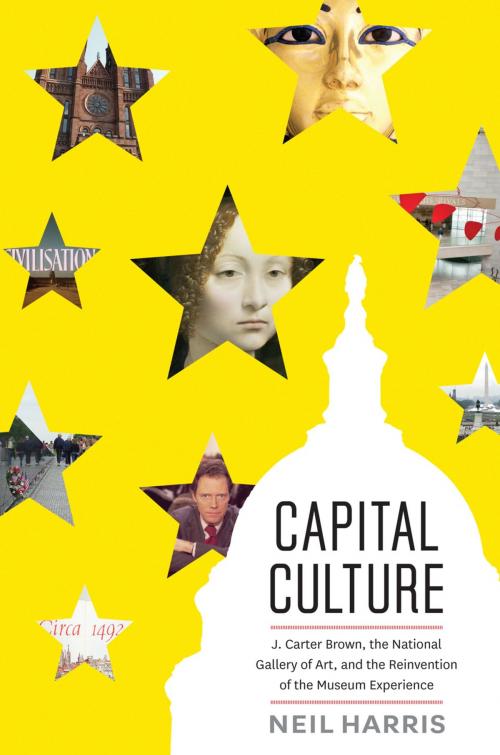Capital Culture
J. Carter Brown, the National Gallery of Art, and the Reinvention of the Museum Experience
Nonfiction, Art & Architecture, Art History, History, Americas, United States, 20th Century| Author: | Neil Harris | ISBN: | 9780226067841 |
| Publisher: | University of Chicago Press | Publication: | September 30, 2013 |
| Imprint: | University of Chicago Press | Language: | English |
| Author: | Neil Harris |
| ISBN: | 9780226067841 |
| Publisher: | University of Chicago Press |
| Publication: | September 30, 2013 |
| Imprint: | University of Chicago Press |
| Language: | English |
American art museums flourished in the late twentieth century, and the impresario leading much of this growth was J. Carter Brown, director of the National Gallery of Art in Washington, DC, from 1969 to 1992. Along with S. Dillon Ripley, who served as Smithsonian secretary for much of this time, Brown reinvented the museum experience in ways that had important consequences for the cultural life of Washington and its visitors as well as for American museums in general. In Capital Culture, distinguished historian Neil Harris provides a wide-ranging look at Brown’s achievement and the growth of museum culture during this crucial period.
Harris combines his in-depth knowledge of American history and culture with extensive archival research, and he has interviewed dozens of key players to reveal how Brown’s showmanship transformed the National Gallery. At the time of the Cold War, Washington itself was growing into a global destination, with Brown as its devoted booster. Harris describes Brown’s major role in the birth of blockbuster exhibitions, such as the King Tut show of the late 1970s and the National Gallery’s immensely successful Treasure Houses of Britain, which helped inspire similarly popular exhibitions around the country. He recounts Brown’s role in creating the award-winning East Building by architect I. M. Pei and the subsequent renovation of the West building. Harris also explores the politics of exhibition planning, describing Brown's courtship of corporate leaders, politicians, and international dignitaries.
In this monumental book Harris brings to life this dynamic era and exposes the creation of Brown's impressive but costly legacy, one that changed the face of American museums forever.
American art museums flourished in the late twentieth century, and the impresario leading much of this growth was J. Carter Brown, director of the National Gallery of Art in Washington, DC, from 1969 to 1992. Along with S. Dillon Ripley, who served as Smithsonian secretary for much of this time, Brown reinvented the museum experience in ways that had important consequences for the cultural life of Washington and its visitors as well as for American museums in general. In Capital Culture, distinguished historian Neil Harris provides a wide-ranging look at Brown’s achievement and the growth of museum culture during this crucial period.
Harris combines his in-depth knowledge of American history and culture with extensive archival research, and he has interviewed dozens of key players to reveal how Brown’s showmanship transformed the National Gallery. At the time of the Cold War, Washington itself was growing into a global destination, with Brown as its devoted booster. Harris describes Brown’s major role in the birth of blockbuster exhibitions, such as the King Tut show of the late 1970s and the National Gallery’s immensely successful Treasure Houses of Britain, which helped inspire similarly popular exhibitions around the country. He recounts Brown’s role in creating the award-winning East Building by architect I. M. Pei and the subsequent renovation of the West building. Harris also explores the politics of exhibition planning, describing Brown's courtship of corporate leaders, politicians, and international dignitaries.
In this monumental book Harris brings to life this dynamic era and exposes the creation of Brown's impressive but costly legacy, one that changed the face of American museums forever.















